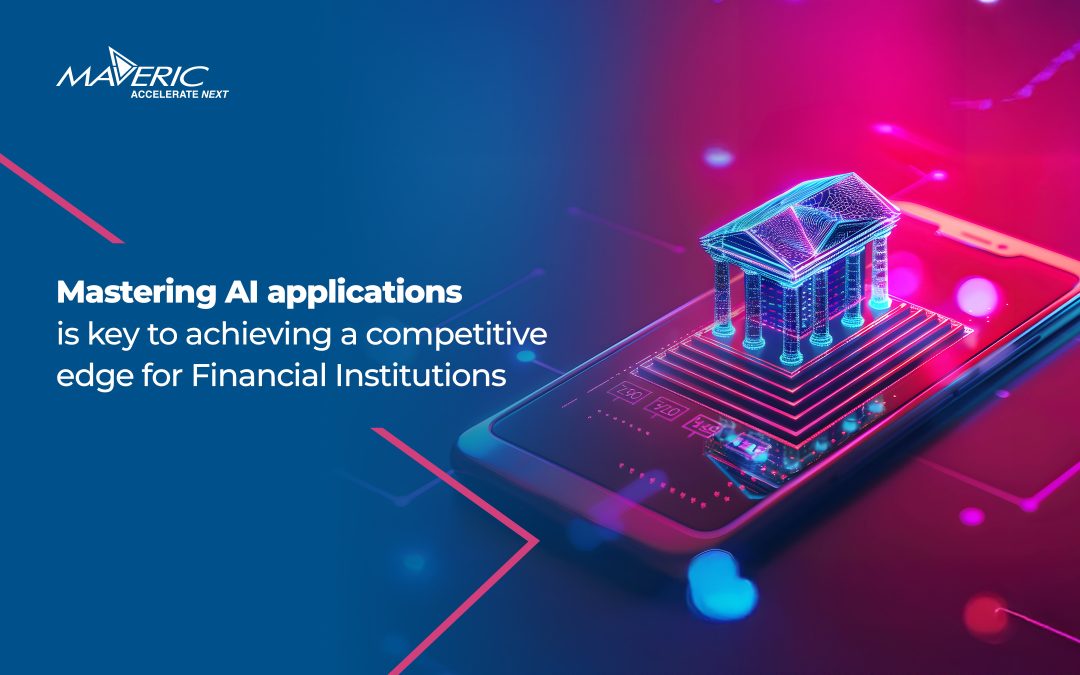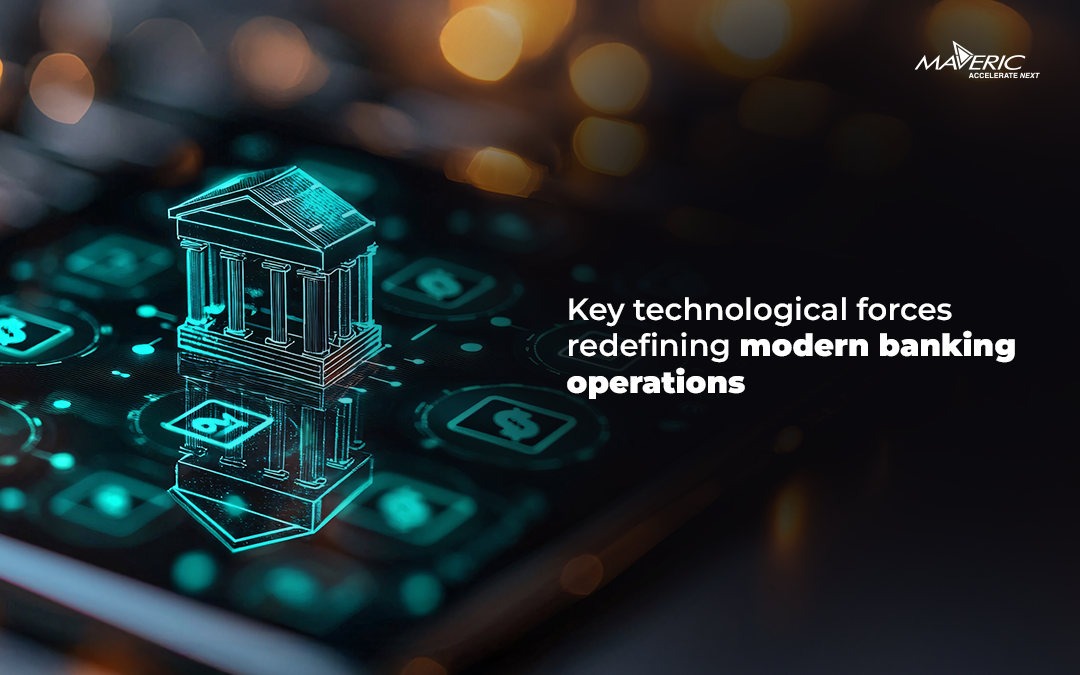Financial institutions have been at the forefront of technology adoption and digital transformation, and now AI is playing a significant role in bringing speed and depth to a myriad of processes, streamlining personalization, customer experience, fraud prevention, and others.
According to McKinsey’s 2023 banking report, Generative AI has the potential to enhance productivity in the banking sector by up to 5% and reduce global expenditures by up to $300 billion. But that is just half the picture. Financial institutions have been at the forefront of technology adoption and digital transformation, and now AI is playing a significant role in bringing speed and depth to a myriad of processes, streamlining personalization, customer experience, fraud prevention, and others.
Case in point, Generative AI models being used to summarize lengthy regulatory reports, simplifying compliance tasks for banks. Transfer learning models being used for advanced chatbots capable of generating human-like responses to customer queries, as well as assisting in drafting financial reports and emails.
Sam Altman recently spoke about how humanity is on the brink of a transformative era with AI set to revolutionise daily life in ways never seen before, and how banking will be at the core of it.
But before we delve in, let’s look at some of the early AI applications in banking.
Automating primary tasks using AI
Banks employed these systems for automating primary tasks such as credit scoring and fraud detection. These systems worked via rigid “if-then” rules, which helped streamline operations but lacked the capability to evolve with new patterns. For instance, fraud detection systems flagged transactions entirely based on predefined thresholds, such as unusually large purchases or foreign transactions. By 2010, machine learning (ML) introduced more advanced systems that could learn from data and improve over time. Banks began using ML algorithms to analyse customer behaviour and build models for credit risk assessments and fraud detection, providing a more proactive approach than conventional methods. However, AI’s role remained largely operational, specialising in backend improvements without directly influencing customer experience.
However, today, AI has far-reaching impact in banking.
Current AI Applications in Banking
1.) Real-Time Onboarding:
One of the noteworthy developments in AI at the service of the bank is the real-time onboarding of clients. Leading studies indicate that 85% of corporate customers encounter cumbersome KYC processes leading to frustration and subsequent deflection to another bank. With AI being able to fulfil all the file and background checks, new clients can open accounts through mobile applications in a few minutes. KYC procedures that are powered by AI are able to examine the documents and images which are uploaded or provide a live service in UI where video verification is done to finish onboarding. As per a study from McKinsey, this can bring onboarding time down to over 50%, thus improving customer experience and enabling banks to get more applications in a shorter span. If done well, applying AI can enable banks to onboard retail and corporate customers in a few clicks, completing the process in near real-time.
2.) Fraud Detection:
From a rules-based approach, fraud detection techniques have improved to the extent where it is now possible to identify frauds real-time and rely on models rather than call-to-action protocols. A typical modern-day fraud detection unit is capable of scanning extensive databases containing transaction data to extract unusual activities. A change in how a person spends their money, like going to new places to spend or getting new credit cards, can be flagged by artificial intelligence for review with recommendation for the next step actions. We have seen that AI-powered fraud detection solutions, especially the ones built to meet stringent regulatory standards can reduce fraudulent transactions by up to 70%, significantly lowering bank liability by up to 40%. Having said that, It is also reported that with real-time data analytics, the false alarms can be cut down to 50%, if not less, which in turn predicts that real risks for the banks will be maintained without offering excessive inconveniences to the customers.
3.) Customer Support and Chatbots:
The first level response to customer queries and support has rapidly moved from IVR based responses to standard intent based chatbots to intelligent conversational AI based chatbots. In India, banks have been employing Artificial Intelligence (AI) based chatbots that respond and attend to the simple concerns, transaction requests, and complaints from the customers. These chatbots are continuing to become sophisticated through the aid of Natural Language Processing (NLP) tools assisting them in meeting the customer requests with appropriate responses. It has reduced the manual work expected and undertaken by human agents by approximately 80% with these AI-based systems handling 80% of the normal queries. Juniper Research had earlier reported that operational cost savings from using chatbots in banking will be up to $7.3 billion by 2023. Advent of Genrative AI has further eased the development and deployment of AI based chatbots.
Banks need to actively focus on bridging the gap between growing customer demands while keeping in line with the complex regulatory environment in which they operate. With the help of AI and Chatbots, seamless communication between customer and agent can be orchestrated uplifting customer experience significantly.
Advanced AI Applications in Banking
1.) Personalized and Predictive Services:
AI’s true value in banking lies in offering tailored, forward-looking services. Picture a world where AI not only grasps your spending patterns but also foresees your needs, suggesting custom investment options and budget advice before you even think to ask.
2.) Predictive Analytics for Customized Banking:
Banks are now using predictive analytics to customize services. By studying customer actions, AI can suggest specific products, boosting customer loyalty and cross selling opportunities. McKinsey predicts AI could add up to $1 trillion yearly to global banking by improving forecasts of customer behavior and market trends. With the improvement of AI tools accuracy in recommending choices might help in adjusting financial plans automatically based on current market conditions.
3.) Protecting Data with Federated Learning:
As AI becomes crucial in banking, safeguarding customer data is key. Federated learning, a new AI method, lets banks train models on spread-out data while keeping sensitive info safe. This approach boosts AI abilities and ensures compliance with strict data privacy rules. As AI’s role grows, these techniques will be vital for meeting GDPR standards and keeping data secure.
4.) AI for Real-Time Money Management:
AI is changing how we handle our money by giving instant insights and auto-adjusting portfolios. AI-powered robo-advisors provide customised investment advice, and some Indian platforms also showcase the power of AI tools to enhance investment management, making financial guidance more accessible and cost-effective for everyone.
5.) Merging AI and Blockchain for Better Banking:
The integration of AI with blockchain technology is poised to restructure banking. Blockchain’s shared ledger boosts security and transparency, while AI further enhances these advantages by accelerating business processes, improving accuracy, and more effectively detecting fraud. AI can analyse blockchain transactions instantly for efficient fraud prevention. It can also improve smart contracts—self-running agreements with built-in terms by automating complex financial tasks, reducing the need for middlemen, and boosting efficiency.
However, there are also challenges in deploying AI solutions in banking. One of the biggest areas of concern is the ethical use of AI.
As AI becomes increasingly prevalent in banking, it is essential to address ethical concerns such as transparency and bias. Decisions made by AI, such as loan approvals, must be clear and understandable to maintain customer trust. Explainable AI (XAI) is emerging as a solution, offering transparent reasons for decisions, for instance why a loan was denied, or a particular product was recommended. AI bias is a major issue. Without careful oversight, AI systems can continue existing biases, especially in credit scoring and fraud detection. Historical data may have biases that influence AI decisions. As AI technology develops, it’s important to ensure fairness, transparency, and accountability.
AI will play a pivotal role in banking. Not just adding engineering value but adding business value from building personalized experiences for customers to facilitating technology advancements that improve efficiency and create differentiated market positioning for banks, and other financial institutions. For Indian banks, the opportunities are endless. With rapid growth in India’s financial ecosystem, Indian banking sector’s embrace of AI demonstrates its potential to drive innovation, improve efficiency, and create a more inclusive and AI-first ecosystem.
About the Author
 Arindam brings over 25+ years of experience in digital channels, AMS, process digitization, and emerging technologies like blockchain, IoT, and cognitive sciences. He has a proven track record in developing mission-critical products and leading digital banking innovations.
Arindam brings over 25+ years of experience in digital channels, AMS, process digitization, and emerging technologies like blockchain, IoT, and cognitive sciences. He has a proven track record in developing mission-critical products and leading digital banking innovations.
Originally published in IndiaAI











